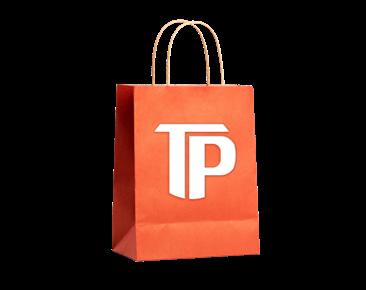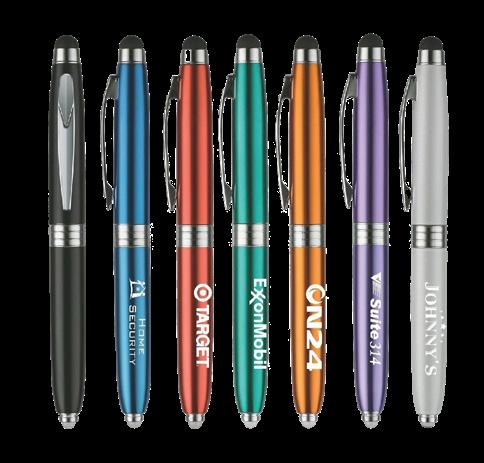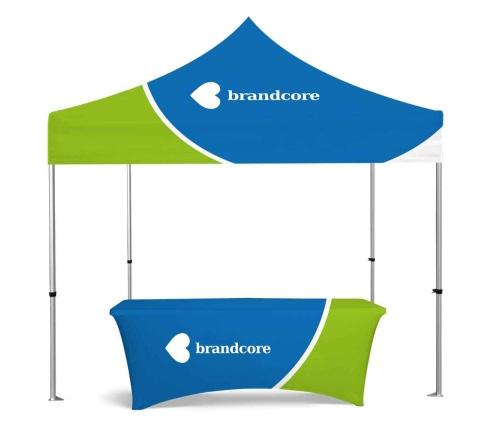ENGAGING

MINDS
TO COMPELLING STORYTELLING VOL. 14, ISSUE 4, 2024


TO COMPELLING STORYTELLING VOL. 14, ISSUE 4, 2024


Your ultimate partner for storefront support.
We blend fulfillment and kit packing services into your company storefront portals, ensuring every order is perfectly packed, tracked, and delivered.
Seamless Integration:
Directly connected with your company portals, simplifying inventory and order management.
Customized Fulfillment: From individual items to comprehensive kits.
Guaranteed Accuracy: Enhanced by wireless
and precise tracking.

any of our marketing assumptions stem from how we were taught and the leadership we’ve experienced. Regardless of where these assumptions originated, once beliefs are established, people often find it difficult to change. However, to find the best version of ourselves and serve our clients effectively, our perspectives must evolve over time.
Some say the landscape of marketing is constantly shifting while others seemingly stick to what they know. We are all aware of the continuous evolution of consumer behavior and the increasing pressure for brands to offer new and innovative solutions. In turn, major disruptions may be forced by crisis or emerge naturally from innovation. Regardless of the change that is upon us, it presents a remarkable opportunity to find a better version of ourselves and create both a competitive advantage and sustainable value for the clients we serve. Our beliefs are often so deeply rooted within us that we never question their validity. Yet, this is a time to shift to a growth mindset with our marketing strategies. The experiences and the technological wave of the last few years has forced us to change some of our beliefs, but our core values remain steadfast. If we truly aim to serve, support, and assist our clients, then those values become our guiding compass.

“THE EXPERIENCES AND THE TECHNOLOGICAL WAVE OF THE LAST FEW YEARS HAS FORCED US TO CHANGE SOME OF OUR BELIEFS, BUT OUR CORE VALUES REMAIN STEADFAST.”
Having a set of beliefs that align with your company values can be a tremendous asset when it comes to providing a valuable platform for your clients. Embracing new ideas and concepts requires shedding outdated beliefs. And marketing is often looked upon to provide the insights to drive that change and generate new revenue streams. The spotlight is on us, and that is a good thing.
In our current issue, we aim to provide some ideas that may require a shift from the overwhelming noise of technology. Our cover article, “Brand Tales,” shifts us back to emotion and the authenticity of realworld stories. And in our second feature, “Gigging,” we discuss how this is a wonderful time to partner with others and shift away from doing it all yourselves. In other words, collaboration is a great vehicle for growth.
Enjoy and warmest regards,

Diana Renner Publisher
Publisher Diana Renner
The Noodle is published bimonthly by Think Patented, ©24
All rights reserved.
For more information, contact ThinkPatented.com 937 353 2299
Production Notes
This issue was printed on our Heidelberg XL106 offset press and the insert was printed on our HP Indigo 100K digital press. The cover showcases reticulated and dull strikethrough varnishes with flood gloss UV coating and process UV inks. The text pages are printed with conventional process inks and an overall gloss aqueous. The cover is printed on 100# Genuine Gloss Cover, the text is printed on 80# Genuine Gloss Text, and the insert is printed on 80# Cougar Smooth Cover.

COTT BONVISSUTO likes to refer to the storytelling technique his company employs as showing vs. telling. For example, when disseminating information to your audience, it is easy to fall prey to pounding them with technical information that too often falls on deaf ears. But, if you can craft a story that shows a “day in the life” of how your audience uses your product or service, your messaging tends to come across stronger and will be more memorable.
For Bonvissuto, CEO of Console Vault, makers of invehicle safes designed to protect your valuables from auto theft, the art of storytelling is not about spec sheets or quality certificates; it is about real-life stories. A successful brand narrative focuses on clear and easy to understand messaging. By incorporating some sort of emotional resonance, brands can further connect with their audiences and make the story more personal.
TO
STAY CONSISTENT TO YOUR BRAND’S TRUE VOICE, YOU HAVE TO UNDERSTAND THE PURPOSE BEHIND YOUR BRAND’S STORY. AIM FOR AN EDUCATIONAL AND/OR ENTERTAINMENTBASED APPROACH VERSUS AN ‘INFO-DUMP’ APPROACH.”
— SCOTT BONVISSUTO, CEO OF CONSOLE VAULT
“A good brand narrative should aid in building trust with your customers and be tailored to your audience needs/ core beliefs,” Bonvissuto says. “Make sure it is something that differentiates your brand apart from competitors. We have had both successful and unsuccessful marketing strategies over the past 20 years. The strategy that stands out is one of simplicity, yet powerful in meaning: ‘Over 20 years. More than 300,000 thwarted smash-and-grabs.’ Highlighting your brand’s longevity, coupled with tapping into an audience’s needs, tells the story of a trusted brand with the experience to provide quality protection.”
And while the strategy seems pretty clear cut, Bonvissuto says too many brands are apt to miss the mark in what truly sets their brand apart from the competition. The key, right from the playbook, is to establish a strong brand voice
and be consistent in that messaging across all platforms. “Engaging with your audience and paying attention to how they interact with your messaging is important. You must be able to provide valuable insights to help adapt and keep your brand relevant and relatable. A brand voice that can evoke emotion in your target audience helps personify your brand, and make your story more relatable and memorable.”
But before you can captivate your audience, you must understand who they are, which sits at the true center of the art of storytelling. If you know who you are talking to and why, the strategy is easier to see. “To stay consistent to your brand’s true voice, you have to understand the purpose behind your brand’s story,” Bonvissuto says. “Aim for an educational and/or entertainment-based approach versus an ‘info-dump’ approach.”
hen Cathy McPhillips thinks about the best brand stories out there today, her mind always goes to Nike and Coca-Cola, both of which have found the mastery in connecting the human engagement element to the heart of their messaging.
Nike’s “Just Do It” and Coca-Cola’s “Share a Coke” campaigns have remained iconic examples of effective storytelling at its best. Nike’s approach works because it goes beyond selling athletic wear, inspiring people to overcome challenges and pursue their goals, while Coke made personal connections by having people look for their names on bottles or encouraging them to buy one for a friend.
“The key is fostering connection,” says McPhillips, Chief Growth Officer for the Marketing Artificial Intelligence (AI) Institute. “And while they are big brands with big budgets, the approach is doable for all brands. By tapping into universal human experiences and emotions—even with their products in the picture— they nurture a strong emotional connection with their audiences.”
In today’s ever-changing marketing landscape, McPhillips says finding the emotional center of your audience through your brand is critical, if not mandatory. “Emotion is central to storytelling because it fosters a deeper connection between the
brand and its audience. Brands can effectively incorporate emotion by telling stories that evoke feelings such as joy, inspiration, empathy or nostalgia. Using real-life testimonials, relatable scenarios and visually compelling content (think usergenerated content) can help evoke these emotions.”
From where McPhillips sits, AI is becoming an even bigger player in this role by assisting in analyzing emotional triggers within audience data and helping brands create content that resonates emotionally. The key is to be genuine and ensure that the emotional tone aligns with the brand’s identity and message.
“Consistency across all touchpoints, and a well-defined character or voice can help make your narrative more engaging and memorable. Incorporating AI tools can enhance this by analyzing customer data to tailor narratives that resonate more deeply with specific audience segments. As [content marketing thought leader] Joe Pulizzi said about content marketing: ‘Consistent, relevant and valuable.’”
In the end, the key is being able to measure the impact and effectiveness of your storytelling efforts, which can be done through various metrics, including engagement rates, social media shares, website traffic and conversion rates. In addition, qualitative feedback from customer surveys and focus groups can provide valuable insights into how your stories resonate with the audience.
More marketers are leaning on AIpowered sentiment analysis on social media to gauge the emotional impact of their narratives. Additionally, AI can help track and analyze these metrics in real time, providing actionable
CONSISTENCY ACROSS ALL TOUCHPOINTS, AND A WELL-DEFINED CHARACTER OR VOICE CAN HELP MAKE YOUR NARRATIVE MORE ENGAGING AND MEMORABLE.”
— CATHY MCPHILLIPS, CHIEF GROWTH OFFICER, MARKETING ARTIFICIAL INTELLIGENCE INSTITUTE

insights for continuous improvement. Check out the tools you’re using and see if you have dug into all the capabilities out there.
While every storytelling plan has its own strategic focus, McPhillips believes you should start your blueprint by clearly defining your brand story and ensuring it aligns with
your mission and values. “Be authentic and focus on building a genuine connection with the audience. If it makes sense for you, build a community. Test and iterate based on feedback and performance metrics, and don’t be afraid to be creative and innovative in your approach.”
For today’s brands, the heart of
every story beats in its authenticity and relatability. More than just data and product specs, carefully woven stories help relay the characters, conflicts and resolutions of your brand’s messaging. By embracing the nuances of human experience, you are creating narratives that engage, stir and leave lasting impressions.


ne of Andrew Davis’ favorite stories about how brands can build creative partnerships between complementary businesses and offer a powerful strategy to amplify their reach and impact involves the Ford Fiesta. In 2010, after years of marketing its supermini car, Ford reached out to 100 online personalities and gave them a Ford Fiesta to drive for six months. In exchange for the vehicle, the personalities were asked to document their experiences.
The marketing exercise, in
successful, meaningful long-term relationships that deliver value for both your audience and your brand,” says Davis, author of the bestselling book, “Brandscaping: Unleashing the Power of Partnerships,” and an internationally acclaimed keynote speaker.
Davis says engaging in co-creating marketing materials with complementary partners offers myriad opportunities to boost your brand’s story. First, the partnership helps expand your messaging by accessing new audiences without relying solely on paid advertising. Second, you can share which Davis—the bestselling author and internationally acclaimed keynote speaker, dubs brandscaping—ended up creating scores of original, fun and engaging content that was delivered to the already existing large fan bases of these online talents. The approach, a textbook example of how co-creating marketing materials can enhance brand value for everyone involved, deviated from the traditional car marketing technique of inundating their audiences with creative and highly produced ads about everything from safety to higher fuel efficiency.
Brandscaping is the formation of a landscape of brands that target the same audience and amplify each other’s message. It is all about identifying authentic content creators and partnering with them with a longterm vision. “Creating partnerships with complementary brands allows you to develop great content and establish
BEFORE COMMITTING TO A FULL-SCALE PARTNERSHIP, IT’S ADVISABLE TO START WITH SMALL, FREE EXPERIMENTS TO TEST BRAND ALIGNMENT, PARTNERSHIP DYNAMICS AND TEAM COMPATIBILITY.”
—
ANDREW
DAVIS, AUTHOR, “BRANDSCAPING: UNLEASHING THE POWER OF PARTNERSHIPS”
resources by pooling your assets to create better content than you could individually. Finally, the partnerships enhance credibility by introducing brands to new audiences through trusted partners, instantly building trust and credibility.
“This approach offers an efficient way to grow your audience, improve content quality and establish trust with potential customers,” Davis says.
When identifying potential partnerships, Davis says it is crucial to seek out brands that share your values and objectives regarding your target audience. This will help you narrow down the list of possible partners to those with the greatest potential. It also is important to ensure your audience genuinely appreciates the partner brand, which will lead to mutually beneficial outcomes when sharing

content or resources. “Once you’ve identified a potential partner, reach out to them to confirm that their goals, objectives and values align with yours, and that their audience is receptive to your product or service.”
After finding a partner, the real work begins. Davis says to maintain cohesive and aligned identities and messages during a collaborative effort, you must focus on long-term partnerships rather than short-term campaigns. This enables a deeper integration and alignment of values, which often is more powerful and effective than one-off collaborations. “The most successful brand partnerships in the marketplace are those built on shared values and long-term commitments, as these naturally lead to more cohesive messaging and stronger brand alignment.”
Brett Townshend has spent his career generating sizable revenue and success on both the corporate and agency sides of consumer insights. Over the years, the Senior VP of Strategy at Quester has worked in domestic and global branding and innovation for iconic brands like Pepsi, Doritos, Ruffles, Walmart, Frigidaire and Lowe’s.
In each relationship, Townshend has helped build successful innovations, brand extensions, product improvements and marketing campaigns worth tens of billions of dollars globally. As a leader in the field, one of his favorite partnerships is the one between Apple and Mastercard, which he says marries the best of what each wants and needs from the relationship. “It is such a practical partnership, which offers an easily identifiable solution to the consumer and solves a key consumer need.”
A deeper dive into the relationship hits at the core of what makes successful partnerships work. The most important step is to identify which partner can help you solve a consumer need. Townshend says it is shocking at times to see how many brands are going into partnership because the CMO is friends or wants
to make a “splash,” with little or no consideration put into helping their respective consumers. “The two brands don’t necessarily have to fit together like peanut butter and jelly, but the consumer need they’re filling should be obvious.”
The second step is to find the opportunity for both brands to
benefit from consumer crossover, i.e., consumers from Brand A are getting positive exposure to Brand B and viceversa. The third step is to make sure each brand’s offer is mutually beneficial. “Sometimes, big brands try to partner with smaller brands, but the big brands want most of the benefit because they feel they’re bringing more to the party. There should be no inequity in the partnership and both brands should benefit equally.”
To ensure a successful brand partnership, it is essential to define clear roles, responsibilities and investments from the outset. This prevents resentment and misunderstandings as the partnership progresses. Additionally, addressing legal and contractual issues early on is crucial, especially when creating shared content or a joint brand.

Clarify ownership of content, talent and any potential new brands that may emerge from the collaboration. For example, drafting detailed partnership documentation can help avoid future conflicts.
“Before committing to a full-scale partnership, it’s advisable to start with small, free experiments to test brand alignment, partnership dynamics and team compatibility,” Davis says. “This approach can provide valuable insights before making larger commitments.
When measuring the success of a creative partnership, the primary focus should be on sales and revenue. Track how the partnership directly impacts revenue, monitor customer crossover, and analyze which products are selling. Other important metrics include reach, engagement, brand awareness and lead generation for B2B brands. Ultimately,
measuring success in dollars and cents is the most effective way to justify and maintain a longstanding, strong partnership.”
If there is one major takeaway from brand partnerships, it is that each one measures success differently, which means those parameters should be set forth at the beginning by each.
“Everyone can agree they want more sales/revenue from a partnership, but it diverges from there,” Townshend says. “Getting exposure doesn’t mean you’ve engaged consumers, so that engagement should be the measurement goal. You should have a plan in place after the partnership has concluded to continually grow the brand in an organic way that’s sustainable for the long run.”
In the ever-evolving landscape of marketing, creative partnerships
“THE TWO BRANDS DON’T NECESSARILY HAVE TO FIT TOGETHER LIKE PEANUT BUTTER AND JELLY, BUT THE CONSUMER NEED THEY’RE FILLING SHOULD BE OBVIOUS.”
— BRETT TOWNSHEND, SVP OF STRATEGY, QUESTER
continue to emerge as powerful catalysts for growth and innovation. By combining strengths, sharing audiences and fostering mutual trust, brands can unlock new possibilities and create compelling narratives that resonate deeply with consumers.
How and where it works is up to you.
In a day and age when marketers are trying to stand out, maybe print is the option. With digital fatigue and technology addiction at an all-time high, people feel less connected. And study after study shows that people retain and remember information when it is physically printed rather than digitally delivered.
Comprehension and retention: Multiple studies have shown that reading from printed materials leads to better comprehension and long-term retention of information compared to digital texts. One meta-analysis found that print is six times better at boosting comprehension skills than digital content. (SOURCE: EDSOURCE.ORG)
One-third of adults believe the amount of information available online today is overwhelming. (SOURCE: PEW RESEARCH)
Print readers typically spend 20 minutes or more with their publication, whereas the average visitor to a digital
news site stays for less than 5 minutes. (SOURCE: HEITMAN)
Print advertisements receive an average response rate of 9%, while email, paid search, and social media receive about 1%. (SOURCE: DMA)
Combining print and digital ads can increase online campaigns’ effectiveness by 400%.
(SOURCE: TOP MEDIA ADVERTISING)
75% of people can recall a brand after receiving a print advertisement, while only 44% can recall a brand after viewing an online ad. (SOURCE: ADWEEK)
A study shows that 75% of consumers feel special when receiving print advertisements. (SOURCE: USPS)
56% of consumers find print marketing the most trustworthy type of marketing. (SOURCE: DMA)



Staying ahead of the curve is crucial for marketers aiming to maintain a competitive edge. Three trends stand out as particularly pivotal in shaping successful campaigns: AI and Automation, Sustainability and Ethical Marketing, and Customer Experience (CX).
■ AI Integration: AI is significantly boosting marketing effectiveness and efficiency. According to HubSpot, 64% of marketers are already using AI and automation, and 38% of those who didn’t use AI in 2023 plan to use it in 2024.
■ Personalization: AI-driven personalization is revolutionizing consumer engagement by analyzing vast amounts of data to create highly focused and personalized experiences.
(SOURCE: COURSERA)
■ Consumer Values: There is a significant shift towards making purchasing decisions based on personal values and brand alignment. Brands that focus on environmental sustainability and ethical practices are more likely to attract and retain customers.
■ Diversity and Inclusion: 61% of consumers find diversity in brand advertising important, and 38% are more likely to trust brands that showcase diversity in their campaigns.
(SOURCE: WSIWORLD)
EXPERIENCE (CX)
■ Focus on CX: Enhancing customer experience remains a pivotal factor. Brands are investing in creating seamless and engaging experiences across all touchpoints to build loyalty and satisfaction.
(SOURCE: WSIWORLD)

How is emotional intelligence (EQ) transforming modern marketing and branding strategies?
Emotional intelligence is a gamechanger in marketing, with the EQ market projected to grow by $49.93 billion USD by 2027. Brands that master EQ connect more deeply with their audiences, while those that don’t risk missed opportunities or reputational damage. In today’s competitive market, emotional connection is crucial.
What are some common signs that a brand might lack emotional intelligence in its marketing? There are several telltale signs:
➤ Lack of empathy in messaging: Brands that fail to understand and address customers’ emotions and needs come across as cold and indifferent, weakening the brand image and causing customer dissatisfaction. Brands should show empathy by addressing common pain points and using relatable storytelling.
➤ One-size-fits-all communication: Generic communication often fails to resonate. Brands need to tailor their messaging to different customer segments, understanding their unique values and triggers. This requires developing detailed profiles for each customer category and continuously updating them.
➤ Overemphasis on features, not benefits: Customers care more about how a product or service benefits them. Brands should focus on clear benefit statements and relatable use-case scenarios that
In an increasingly competitive market, where consumers have a plethora of choices, emotional intelligence (EQ) has emerged as a pivotal element in marketing and branding strategies. Martha Marchesi, CEO of JK Design, a full-service creative agency with clients like Johnson & Johnson and Philips, shares her insights on the transformative power of EQ. In this Q&A, Martha discusses the signs of lacking emotional intelligence in marketing and provides practical advice on leveraging EQ to build stronger, more resonant brand connections.
highlight how their offerings improve customers’ lives.
➤ Disregard for customer feedback: Brands that ignore customer feedback struggle to build loyalty. It’s crucial to seek, value, and act on feedback to improve products, services, and messaging continuously.
➤ Inability to convey brand values: Emotionally intelligent brands effectively communicate their core values and beliefs, integrating them across all marketing channels to foster a stronger emotional connection with their audience.
Can you provide examples of how brands can exhibit empathy in their messaging?
Absolutely. One effective approach is addressing specific customer pain points, such as productivity or financial concerns. Storytelling that highlights relatable customer experiences can also create a deeper bond. It’s important to ensure empathy is conveyed authentically, which can be achieved by displaying vulnerability in public communications or using genuine
customer testimonials.
How can brands tailor their communication to different customer segments effectively? Start by understanding what makes each segment unique. This goes beyond demographics to include values, inspirations, and frustrations. Use this information to craft targeted messaging and visuals. Continuously refine these profiles to keep pace with evolving sensibilities and cultural shifts.
What steps can brands take to focus more on benefits rather than features?
Shift the focus from product attributes to how these features improve customers’ lives. Use clear benefit statements and create relatable use-case scenarios that detail specific customer benefits. Incorporate metrics and analytics to make a compelling case for your solution.
How should brands approach customer feedback to enhance their EQ?
Actively seek feedback through polls, surveys, social media
monitoring, and focus groups. Treat feedback as valuable market research and take concerted action on viable data points. Share insights with internal teams to ensure a cohesive understanding of the organization’s key performance indicators.
What is the best way for brands to communicate their core values?
Clearly define and articulate your
STORYTELLING THAT HIGHLIGHTS RELATABLE CUSTOMER EXPERIENCES CAN ALSO CREATE A DEEPER BOND.
brand values internally first. Then, integrate these values consistently across all marketing channels. Showcase your commitment through public communications,
social media, advertising, and participation in events that align with your ideals. This systematic approach helps foster a stronger emotional connection with your audience.
By embracing these principles of emotional intelligence, brands can create more meaningful connections with their audiences, leading to sustained loyalty and competitive advantage.







Make ordering easy with our online web store solutions Think Patented crafts customizable storefront portals allowing your team to effortlessly select and order promotional products aligned with your brand identity. Our services cater seamlessly to: Employee Incentive Programs | Customer Loyalty Rewards Prospecting & Business Growth Initiatives Charity & Corporate Events | Trade Show Displays & Giveaways & Much More!

–


